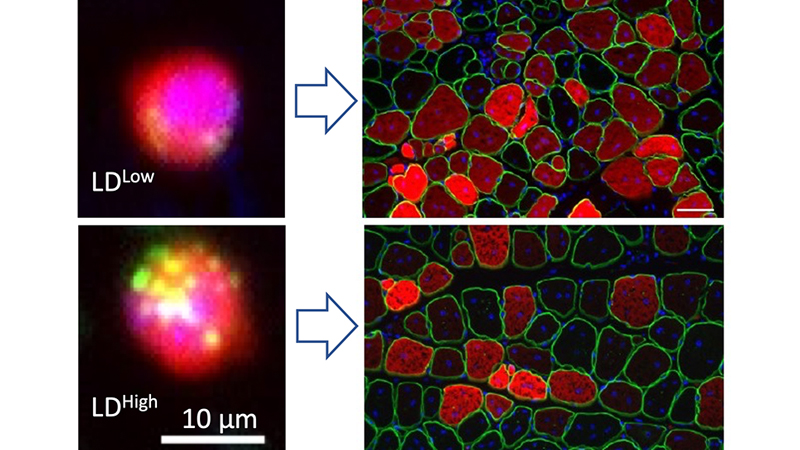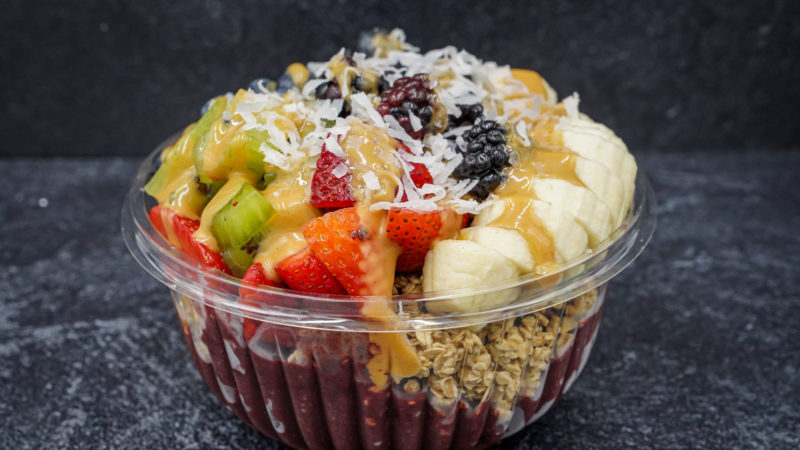WEST LAFAYETTE, Ind. — A workforce of Purdue College scientists led by Shihuan Kuang has received a $2.5 million grant from the National Institutes of Overall health to determine the job of lipid droplets in muscle stem cell operate, a review with implications in both people and livestock.
“Lipid droplets are essential as a regulatory ingredient of the stem mobile. The information of lipid droplets can make the stem cell purpose superior or even worse,” stated Kuang, Cancer Center Chair in Stem Cell Biology and a professor of animal sciences in Purdue’s Faculty of Agriculture.
The human angle will target on muscle mass-relevant disease, aging and damage. The livestock aspect will delve into animal growth to greatly enhance meat output, high quality and flavor. Functioning with Kuang on the venture are Christina Ferreira, a developmental biologist with education in analytical chemistry in the Bindley Bioscience Centre James Markworth, assistant professor of animal sciences and Chi Zhang, assistant professor of chemistry in the College or university of Science.
The grant follows a analyze that Kuang and 8 Purdue co-authors released in the journal Mobile Reports last 12 months showing how excess fat plays an sudden function in the destiny of muscle stem cells.
“We know that if you perturb lipid droplets, the cells do not do perfectly,” Kuang stated. “The problem now is what do the lipid droplets do in the cell? Do they health supplement vitality to the cells? Or do the lipid droplets probably secrete sure types of molecules that control cell perform?”
Men and women generally assume of lipids as poor mainly because they accumulate within the body as body fat tissue, Markworth stated. The NIH job, nonetheless, will check out the likely favourable purpose that lipids may engage in as important signaling molecules in muscle mass.
“Right now, we don’t truly know what styles of lipids are located in these droplets,” he said.
Markworth is primarily fascinated in the position of lipid metabolites – recognised as bioactive lipid mediators – in muscle biology. Are dietary critical omega-3 or omega-6 (wholesome unsaturated fat) discovered in just lipid droplets, for instance?
“Does the sort of unwanted fat that they contain affect their purpose? And do their various downstream metabolites play diverse roles in determining stem cell fate?” he said.
In the past, scientists considered the droplets as inert storage containers, “like a garbage can,” Kuang explained. Learning far more about how lipid droplets influence stem cells could guide to their manipulation to repair service muscle mass harm more fast or to heal muscle sickness, he claimed.
The operate has relevance to sarcopenia – prevalent, age-associated muscle atrophy – as properly as metabolic diseases that have an affect on the muscle, these kinds of as being overweight and diabetes. The treatment method of big genetic muscle mass conditions, these kinds of as Duchenne muscular dystrophy, and of far more widespread training-induced and traumatic muscle mass damage also could advantage.
From an animal science viewpoint, “lipid droplets are discovered in the muscle of livestock species, the meat that we eat,” Markworth explained. “The composition of lipid droplets in the meat may impact the two the taste of the meat and its dietary benefit to the human food plan. If we can manipulate lipid in the muscle, we could most likely enhance meat top quality.”
Markworth joined the Office of Animal Sciences faculty in 2021. His collaborations with Kuang show the department’s heightened concentration on essential muscle mass analysis.
“My lab would like to url the role of lipids and their downstream bioactive molecules in muscle mass back again to life style, nourishment, diet regime and work out behaviors,” Markworth mentioned. “If we fully grasp what lipids are crucial within the cells, their position and how they perform, we can manipulate this conveniently by what kind of lipids we take in.”
Lipid droplets are amongst several different kinds of cogs in the mobile machinery. At the Bindley Center’s Metabolite Profiling Facility, Ferreira chemically analyzes the lipids and other small molecules connected to the metabolic regulation of the muscle stem cells that the group is studying.
“When cells improve their lipid composition, they adjust their roles in metabolic process,” she reported.
Ferreira makes use of an array of remarkably delicate procedures, including two formulated by Purdue’s Graham Cooks, the Henry Bohn Hass Distinguished Professor of Analytical Chemistry, to profile the metabolic rate of stem cells and to chemically screen their involved lipid droplets.
“Stem cells are extremely scarce. They seem in compact quantities,” Ferreira reported. Lipid droplets, in the meantime, are hard to chemically evaluate mainly because of their nanoscale dimensions. Countless numbers of them could lay facet-by-facet throughout the width of a one human hair.
Zhang provides Raman spectroscopy to the undertaking. With this imaging system, he measures the compositions of lipids in stay cells. Raman imaging exploits the way that molecular vibrations connection to gentle beams to evaluate chemical compositions. He also has designed an imaging procedure that allows the crew to monitor the lipid droplets as the stem cells transform to muscle cells and other mobile varieties.
“We are a group for creating resources. We hope that our applications can be utilised by biologists,” Zhang said. “Finding apps is generally the enthusiasm we have.”
His team currently is coming up with a device that can just take illustrations or photos of muscle cells while also controlling their fate as they differentiate. The team also is tests how to exactly focus on a laser only on lipid droplets to see if manipulating the droplets could modify the stem-mobile differentiation procedure.
Though Purdue’s NIH analyze will emphasis on muscle mass, it has likely implications for stem cells all through the system, such as neural stem cells.
“Lipid droplets may well engage in a comparable purpose in other tissue stem cell forms that are not researched nonetheless,” Kuang reported.
Author: Steve Koppes
Media make contact with: Maureen Manier, [email protected]
Resource: Shihuan Kuang, [email protected]
Agricultural Communications: 765-494-8415
Maureen Manier, Division Head, [email protected]





More Stories
White House plans to nominate cancer center chief to lead NIH
What Happens to the Brain in Alzheimer’s Disease?
Biden Plans to Pick Monica Bertagnolli to Lead National Institutes of Health